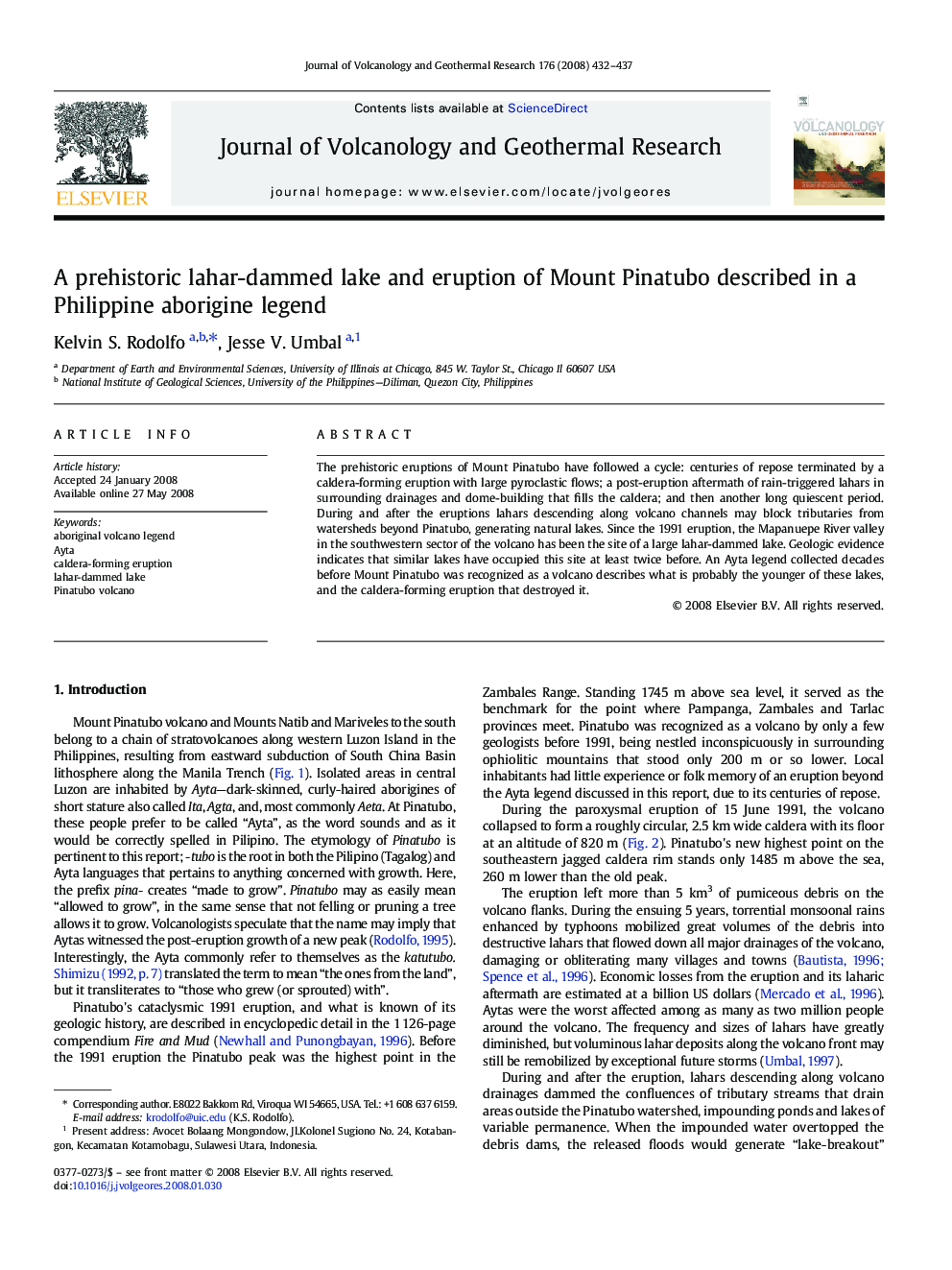| Article ID | Journal | Published Year | Pages | File Type |
|---|---|---|---|---|
| 4715260 | Journal of Volcanology and Geothermal Research | 2008 | 6 Pages |
The prehistoric eruptions of Mount Pinatubo have followed a cycle: centuries of repose terminated by a caldera-forming eruption with large pyroclastic flows; a post-eruption aftermath of rain-triggered lahars in surrounding drainages and dome-building that fills the caldera; and then another long quiescent period. During and after the eruptions lahars descending along volcano channels may block tributaries from watersheds beyond Pinatubo, generating natural lakes. Since the 1991 eruption, the Mapanuepe River valley in the southwestern sector of the volcano has been the site of a large lahar-dammed lake. Geologic evidence indicates that similar lakes have occupied this site at least twice before. An Ayta legend collected decades before Mount Pinatubo was recognized as a volcano describes what is probably the younger of these lakes, and the caldera-forming eruption that destroyed it.
